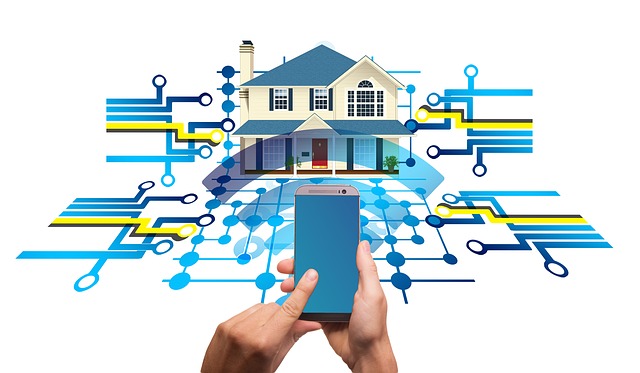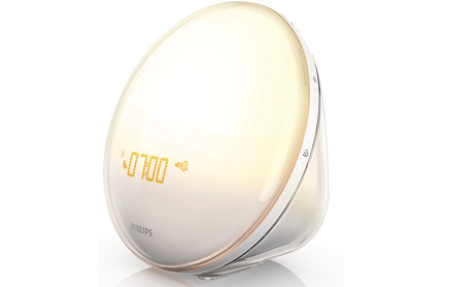With Alexas and Google Homes popping up in houses all over world, smart home feature are all the rage at moment. And for most people, they’re nothing more than gadgets, but for us lucid dreamers, smart home devices can actually help us to get lucid.
Here’s how you can make the most of smart home features, and use them tactically to help you lucid dream.
Use smart alarms for the Wake Back To Bed technique
If you’ve been trying to lucid dream for a while, you’re probably familiar with the Wake Back To Bed (WBTB) technique. This is where you wake yourself during REM sleep, and then go back to sleep, with your mind awake and alert. Smart home devices can actually make this technique a whole lot easier.
If you’ve got a Google Home or an Amazon Alexa, you can really easily set an alarm for a certain time. And even better, you can choose what wakes you up, be it your favourite song, the radio, or just the voice of your device.
So for the WBTB technique, you can set your smart alarm for 2-3 hours before you would normally wake up (as this is when you’re most likely to be in REM sleep).
Hold on a minute though, surely this is no different from any other alarm? Wrong. There’s one feature that makes smart alarms perfect for lucid dreamers: the voice controls.
With the WBTB technique, you don’t want to get out of bed to turn off your alarm. In fact, you want to avoid moving your body if you can help it.
So whilst other alarms require some sort of movement to turn them off, you can simply call out to your smart device to stop the alarm. This way, your body stays ready to fall back to sleep, whilst your mind is awake, alert, and ready to get lucid!
Use your smart devices to do reality checks
Part of the fun of smart home devices is asking them ridiculous questions and seeing what they answer. But a not-so-ridiculous question to ask is ‘am I dreaming?’
Depending on what device you have, you’ll probably get one of two answers: ‘no’ or ‘sorry, I don’t know that one’.
Either way, each time you ask your device whether or not you’re dreaming, you know you’re going to get the same response. This is a great way to do a reality check, even if it does make you sound a little mad.
Doing regular reality checks is one of the best ways to improve your chances of becoming lucid. They also help you realise when you actually do become lucid.
Let’s say you ask the same question, ‘am I dreaming?, out loud in a dream. If you’re not met with the same voice or response as your smart device usually gives you, you’ll realise your lucidity.
Using smart temperature control to stimulate sleep stages
Some smart home devices (like the nest smart thermostat) hook up to your heating or air conditioning system, making it super easy to raise or lower the temperature in your home.
If you can use your smart home device to change the temperature in your room at a certain time, this could help you lucid dream.

We find it easiest to fall asleep in a temperature that’s not too warm, and not too cold, so for the majority of the night, your home’s normal temperature is fine.
But if you really want to make lucid dreaming that bit easier, you can use your smart home device to raise the temperature a little in the early hours of morning (which is when you’re more likely to experience REM sleep).
Vivid dreams have often been associated with warmer temperatures, hence why we often wake up from dreams in a sweat. So if the temperature in your bedroom raises a little once you’re already asleep, your mind will be brought closer to awakening, and you’ll find your dreams become more vivid and even lucid.
Use smart devices to simulate sunlight
As well as the alarms that come built into most smart home devices, there are also purpose built smart alarms. Smart alarms like the Philips Wake-Up Light wake you up with a sunlight simulation, so you feel as though you’ve arisen with the sun.
Why would you want that? Because it’s much nicer and easier to wake up feeling like you’ve done so naturally, with the sun, rather than with some shrill and annoying alarm tone.
Plus, sunlight simulations help you sync your internal body clock with your lifestyle, so that no matter when you’re getting your sleep, you improve the quality of your sleep and feel well rested and energised throughout the day.
Many people are often put off lucid dreaming because they feel tired after trying techniques like the WILD and WBTB. But with a sunlight alarm clock, that comes on at whatever time you choose, you won’t feel the tiring effects of lucid dreaming.
There’s also the fact that a relaxed mindset is key to getting lucid. Waking up to an annoying alarm noise can put you in a stressed mood for the entire day, but with a smart sunlight alarm, you’ll feel positive about going to sleep and waking up.




